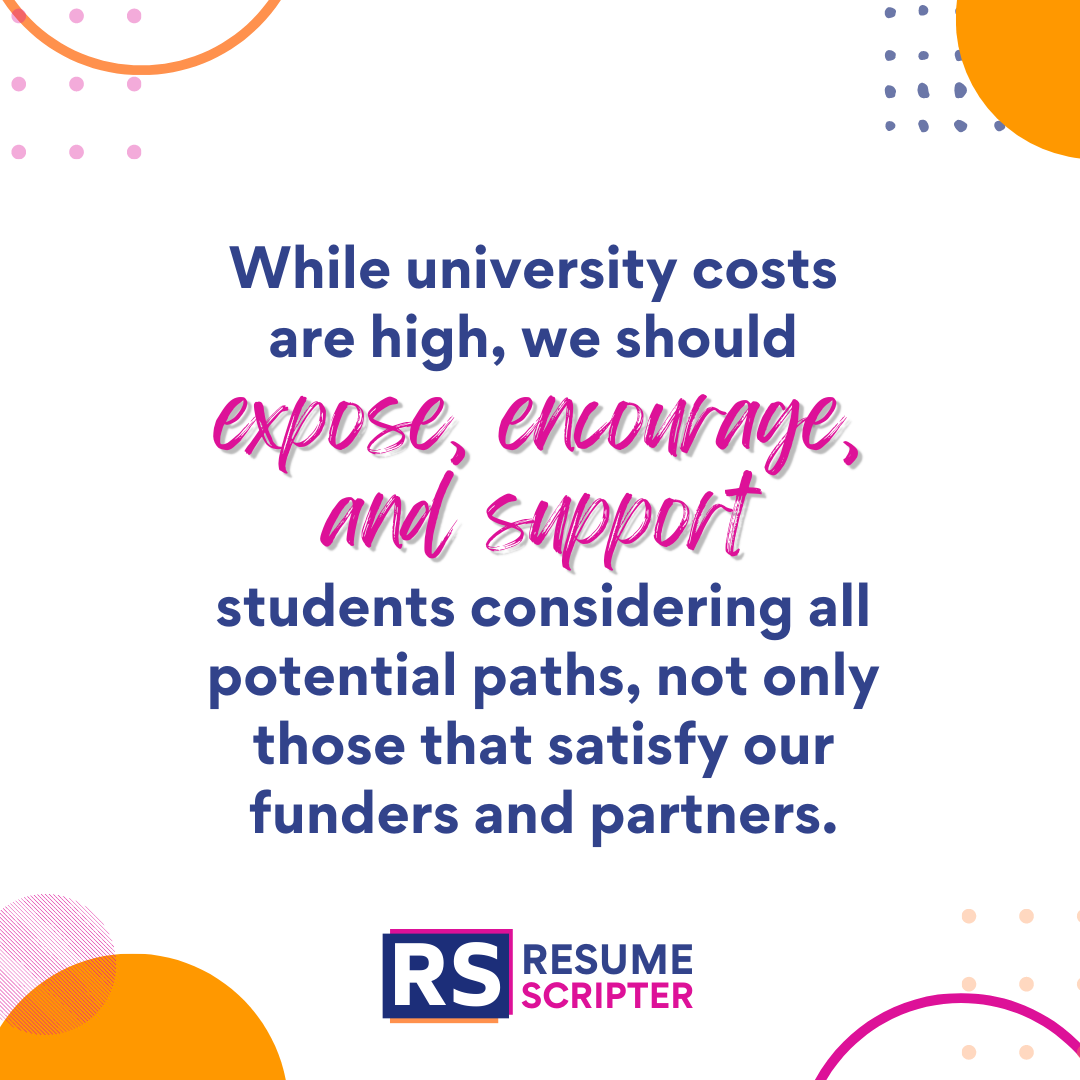How we can best support job-seekers from historically underestimated backgrounds?
The last several years have seen a considerable increase in investment and attention in apprenticeships and vocational training programs that provide exposure and credentialing for in-demand fields.
Given the rising cost of a university education and the ever-widening income gap, it’s hard to find fault with programs that aim to connect candidates with growing industries that promise career opportunities and increased economic mobility.
From meeting with dozens of leaders of these programs and learning how they operate, I have three considerations about their effectiveness and impact on their communities.
1. Are we pushing our own political or economic agendas on communities whose identities have historically been undervalued?
In some regions, the pendulum of support has swung so far from a university education that there are few resources or opportunities for students from non-wealthy backgrounds to pursue a college degree. If we’re exposing young people to vocational programs because we assume that they ‘don’t need’ a college-level education, we’re perpetuating and worsening the divide between educated and undereducated groups.
While university costs are high, we should expose, encourage, and support students considering all potential paths, not only those that satisfy our funders and partners.
When we meet these people where they're at, and with a strengths-focused lens, we're treating them as whole people with uniue talents to contribute.

2. Are we effectively mirroring industry needs with training opportunities?
The pace of industrial advancement is faster now than it’s ever been. How accurately can we predict what skills candidates will need in fields that are still evolving? Are we promising credentials that will truly be marketable? Or are we developing vocational programs that are the easiest to get external buy-in and funding for?
Some programs do this fantastically well. For instance, a program called SkyHive uses machine learning to teach job-seekers how to leverage their existing skills to propel into careers in fields that are actually growing.
I've seen many training programs that develop their learning content directly in tandem with industry leaders and hiring partners. Yet I've also seen programs that cobble together curriculum and certifications only once an RFP has been released.
3. Are we treating program participants as emerging talent - or as outcomes?
Career pathways programs are unique in that they accept students regardless of their past experience and academic backgrounds. A participant doesn’t need to have direct experience in a field to pursue a credential in it. But when these students complete a vocational program, they often compete with other entry-level candidates – even if they had already gained years of prior work experience in other sectors.
Ideally, we should be teaching these students to market themselves upon completion of these programs, to leverage the transferable skills they’ve gained in other sectors, to help them build on their existing talents and skillsets. By doing this, we'd be helping them develop as multifaceted candidates instead of treating them as a one-dimensional outcomes for reporting purposes.
If you want to learn more about this, join me on April 4th for a free, 45-minute Zoom training:
How to Leverage Skills in a Successful Job Search
I'll share the strategies I use to bring a skills-focused lens to the job search process.

March 9, 2023




Comments